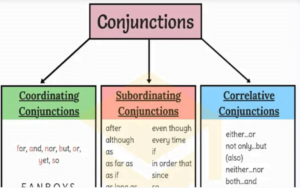Dấu nối là những từ được sử dụng để kết nối từ, cụm từ, mệnh đề hoặc câu trong một cách ngữ pháp chính xác. Chúng được sử dụng để liên kết các phần khác nhau của một câu và thể hiện mối quan hệ giữa chúng. Trường THPT Sài Gòn chia sẻ tới các bạn học sinh một số loại dấu nối trong tiếng Anh dưới đây:

- Dấu nối đồng bộ (Coordinating Conjunctions):
-
- For
- And
- Nor
- But
- Or
- Yet
- So
Những từ này được sử dụng để kết nối từ, cụm từ hoặc mệnh đề độc lập có cấu trúc tương đương.
Ví dụ:
For I am tired, I left early.
I like wathing TV, and playing computer games.
I don’t want to see him and nor do his friends.
I like coffee, but not hot coffee.
I want to see Justin Bieber or Charlie Puth.
I am tired, yet I have to finish my homework.
I am tired, so I want to go home.
Dấu nối phụ thuộc (Subordinating Conjunctions):
-
- After
- Although
- Because
- Before
- If
- Since
- Though
- Until
- When
- While
Dấu nối phụ thuộc giới thiệu mệnh đề phụ thuộc và thiết lập mối quan hệ giữa mệnh đề phụ thuộc và mệnh đề độc lập trong một câu.
Ví dụ:
After I had finished my work, I went out.
Although it rained, I still went to school.
Because I was tired, I left early.
If I have money, I will buy a Porsche.
Since I don’t have enough freetime, I cannot visit my friends.
Though he didn’t have enough money, he still bought it.
I will wait here until I see him.
When you came, I was taking a bath.
While I was playing with my brothers, my mom was cooking dinner.
Dấu nối song song (Correlative Conjunctions):
-
- Both...and
- Either...or
- Neither...nor
- Not only...but also
- Whether...or
Những dấu nối này hoạt động theo cặp để kết nối từ hoặc nhóm từ có cấu trúc tương đương.
Ví dụ:
She is not only beautiful but also warm-hearted.
Tom will choose to buy either a red or a white car.
Trạng từ nối (Conjunctive Adverbs):
-
- However
- Nevertheless
- Moreover
- Therefore
- Meanwhile
- Furthermore
Mặc dù không phải là dấu nối, những từ này hoạt động tương tự như dấu nối bằng cách kết nối mệnh đề hoặc câu và chỉ ra mối quan hệ giữa chúng.
Ví dụ: He studied hard. However, he failed in the exam.

Bài tập:
- The test was difficult. He passed it.
- She likes tea. She likes hot chocolate.
- It's a beautiful day. We can't go camping.
- It's raining. We'll stay at home.
- I finish my homework. I'll join your birthday party.
- I was studying. He was playing games.
- He forgot his raincoat. He got wet.
- She studied hard. She passed the test.
- You finish your homework. You can't hang out.
- It's raining. We're going shopping.
- I want to watch a film. I want to read a comic.
- She studied hard. She wanted to pass the test.
- She missed the bus. She arrived school late.
- I'll bring an umbrella. It rains.
- You finish your chores. You can go out with your friends.
- The baby slept. The parents watched TV.
- It was a difficult task. He completed it.
- You follow the rules. You can stay at the park.
- She missed her flight. She had to reschedule her trip.
- She left a note. You could find her message.





